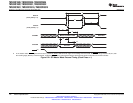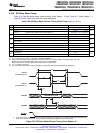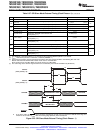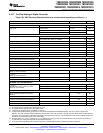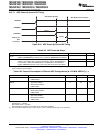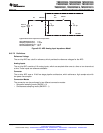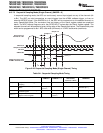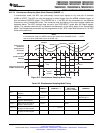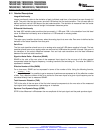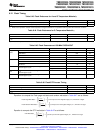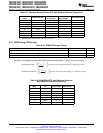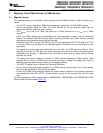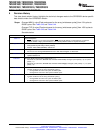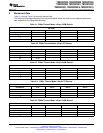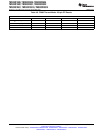
N +
(
SINAD * 1.76
)
6.02
TMS320F2809, TMS320F2808, TMS320F2806
TMS320F2802, TMS320F2801, TMS320C2802
TMS320C2801, TMS320F28016, TMS320F28015
SPRS230L–OCTOBER 2003–REVISED DECEMBER 2009
www.ti.com
6.11 Detailed Descriptions
Integral Nonlinearity
Integral nonlinearity refers to the deviation of each individual code from a line drawn from zero through full
scale. The point used as zero occurs one-half LSB before the first code transition. The full-scale point is
defined as level one-half LSB beyond the last code transition. The deviation is measured from the center
of each particular code to the true straight line between these two points.
Differential Nonlinearity
An ideal ADC exhibits code transitions that are exactly 1 LSB apart. DNL is the deviation from this ideal
value. A differential nonlinearity error of less than ±1 LSB ensures no missing codes.
Zero Offset
The major carry transition should occur when the analog input is at zero volts. Zero error is defined as the
deviation of the actual transition from that point.
Gain Error
The first code transition should occur at an analog value one-half LSB above negative full scale. The last
transition should occur at an analog value one and one-half LSB below the nominal full scale. Gain error is
the deviation of the actual difference between first and last code transitions and the ideal difference
between first and last code transitions.
Signal-to-Noise Ratio + Distortion (SINAD)
SINAD is the ratio of the rms value of the measured input signal to the rms sum of all other spectral
components below the Nyquist frequency, including harmonics but excluding dc. The value for SINAD is
expressed in decibels.
Effective Number of Bits (ENOB)
For a sine wave, SINAD can be expressed in terms of the number of bits. Using the following formula,
it is possible to get a measure of performance expressed as N, the effective number
of bits. Thus, effective number of bits for a device for sine wave inputs at a given input frequency can be
calculated directly from its measured SINAD.
Total Harmonic Distortion (THD)
THD is the ratio of the rms sum of the first nine harmonic components to the rms value of the measured
input signal and is expressed as a percentage or in decibels.
Spurious Free Dynamic Range (SFDR)
SFDR is the difference in dB between the rms amplitude of the input signal and the peak spurious signal.
130 Electrical Specifications Copyright © 2003–2009, Texas Instruments Incorporated
Submit Documentation Feedback
Product Folder Link(s): TMS320F2809 TMS320F2808 TMS320F2806 TMS320F2802 TMS320F2801 TMS320C2802
TMS320C2801 TMS320F28016 TMS320F28015



